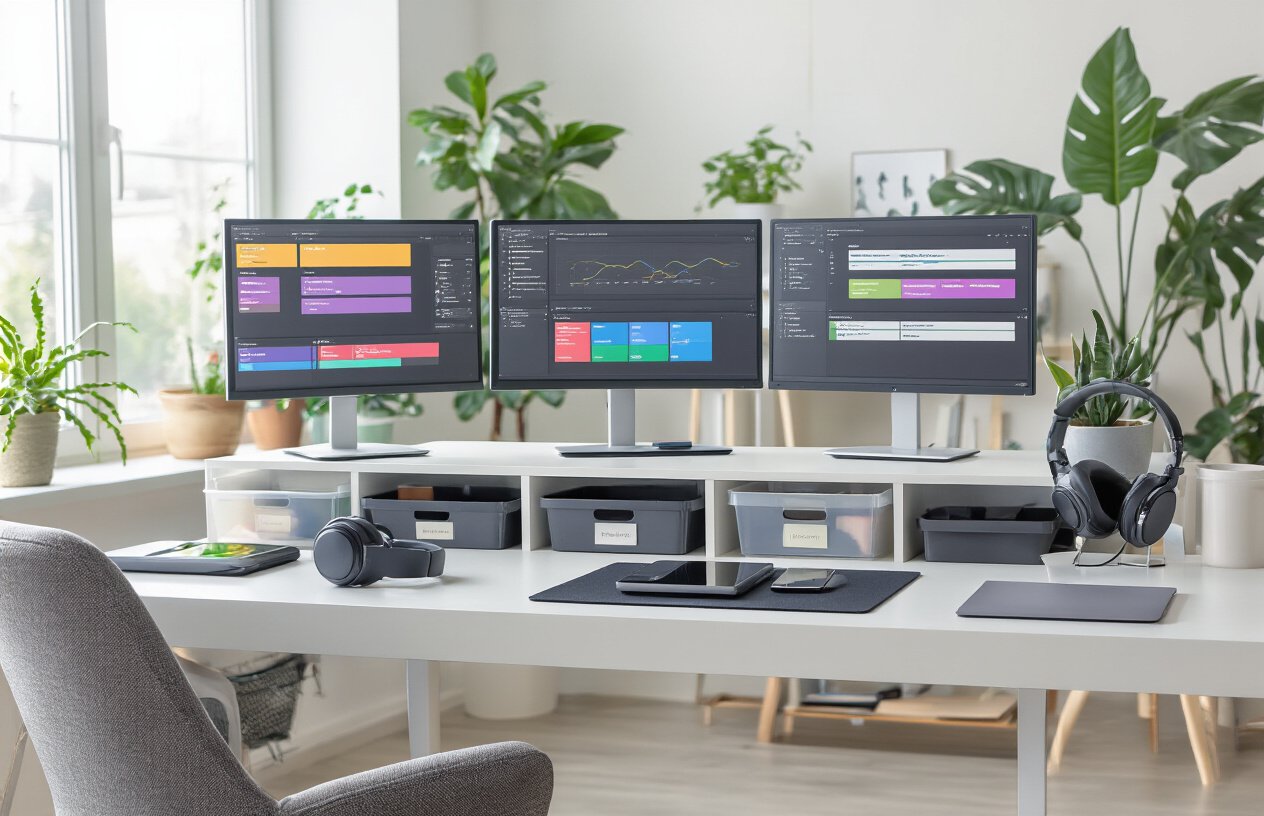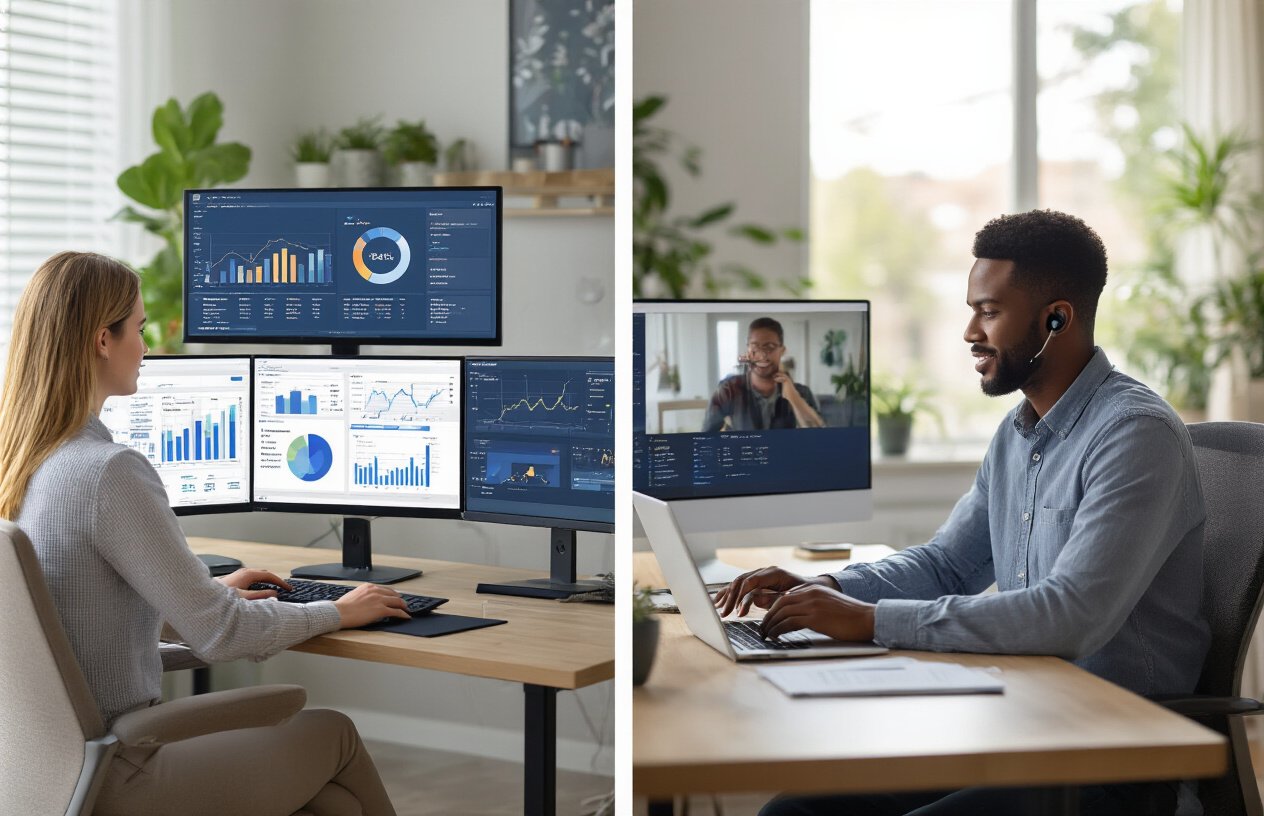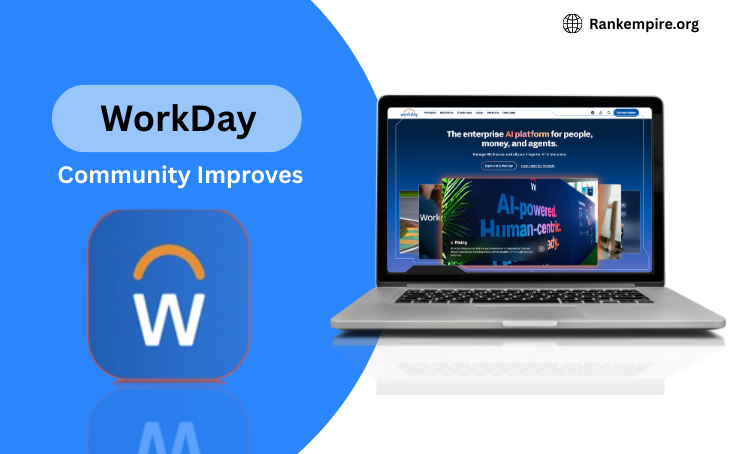Remote teams approach Workday communities with unique strategies that differ significantly from their office-based counterparts. For HR leaders, IT administrators, and team managers overseeing distributed workforces, understanding these differences can unlock better remote team communication and boost overall productivity.
When teams work across time zones and physical locations, they rely on virtual workspace organization and remote collaboration tools in ways that traditional teams simply don’t need to consider. Remote workers often turn Workday communities into central hubs for asynchronous updates, knowledge sharing, and maintaining team connections that would otherwise happen naturally in hallway conversations.
This guide explores how distributed teams maximize their Workday community usage through three key areas. First, readers will discover the specific communication patterns that successful remote teams use to stay aligned and productive. Second, they’ll learn about virtual workspace organization methods that help remote workers find information quickly and collaborate effectively across different schedules. Finally, the discussion covers how remote teams integrate collaboration tools with their Workday communities to create seamless workflows that support distributed team performance tracking and cultural connection.
Key Communication Patterns That Drive Remote Team Success

Asynchronous Messaging Strategies for Global Collaboration
Remote teams leverage Workday communities to create structured messaging workflows that span multiple time zones. They establish clear communication protocols using threaded discussions and designated channels for different project phases, allowing team members to contribute meaningfully regardless of their geographic location. These distributed workforce strategies include setting response time expectations and using status indicators to signal availability.
Video-First Community Interactions That Build Trust
Successful remote teams prioritize video communication within their virtual workspace organization to foster authentic connections. They host regular video check-ins, virtual coffee breaks, and screen-sharing sessions that replicate in-person interactions. This approach helps remote team communication feel more personal and builds stronger relationships among distributed team members.
Documentation Practices That Eliminate Information Silos
Remote collaboration tools become most effective when teams maintain comprehensive knowledge bases within their Workday communities. They create searchable repositories, maintain updated project wikis, and document decision-making processes to ensure information accessibility. These practices prevent knowledge gaps and enable new team members to quickly understand project contexts and organizational procedures.
Real-Time Feedback Loops That Accelerate Decision Making
High-performing remote teams establish rapid feedback mechanisms through integrated communication channels and collaborative workspaces. They use instant polling features, quick approval workflows, and real-time document editing to maintain project momentum. This streamlined approach to remote work strategies reduces delays typically associated with distributed team coordination and keeps projects moving forward efficiently.
Virtual Workspace Organization Methods Remote Teams Prioritize

Channel Structuring Systems That Reduce Noise and Confusion
Remote teams establish clear channel hierarchies within Workday communities to prevent information overload. They create dedicated spaces for urgent announcements, daily updates, and casual conversations, ensuring team members know exactly where to find specific information. Smart naming conventions and channel descriptions help distributed workforce members navigate virtual workspace organization efficiently without getting lost in endless threads.
Project-Based Community Segmentation for Focused Discussions
Successful remote teams organize their Workday communities around specific projects and deliverables rather than department structures. They create temporary workspaces for cross-functional initiatives, allowing team members to collaborate intensively without distracting other groups. These segmented communities include project timelines, resource libraries, and decision-making threads that keep remote team communication streamlined and purposeful throughout the project lifecycle.
Cross-Functional Team Integration Techniques
Remote collaboration tools within Workday communities enable seamless integration between different departments and skill sets. Teams establish shared channels where marketing, development, and operations can coordinate without scheduling endless meetings. They use @mentions strategically, create role-based permissions, and maintain visibility dashboards that show each function’s progress. This integration approach prevents silos while maintaining focused team productivity across distributed locations.
Knowledge Base Creation That Serves Distributed Workflows
Remote teams build comprehensive knowledge repositories within their Workday communities that address the unique challenges of distributed work. They document processes with time zone considerations, create video tutorials for complex procedures, and maintain FAQ sections for common remote work scenarios. These knowledge bases include troubleshooting guides for remote team productivity issues and best practices that new distributed workforce members can access immediately upon joining the organization.
Collaboration Tools Integration That Amplifies Remote Productivity

Calendar synchronization across multiple time zones
Remote teams rely on sophisticated calendar integration systems that automatically convert meeting times across global locations. These tools eliminate the confusion of manual time zone calculations by displaying events in each team member’s local time zone while maintaining consistent scheduling data within Workday communities. Smart scheduling features analyze team availability patterns and suggest optimal meeting windows that respect work-life balance across different regions.
File sharing protocols that maintain version control
Distributed workforces implement robust version control systems that track document changes in real-time, preventing the chaos of multiple file iterations. Teams establish automated backup protocols and access permissions that sync seamlessly with their virtual workspace organization, ensuring everyone works from the most current version while maintaining a complete audit trail of modifications.
Task management workflows embedded in community spaces
Modern remote collaboration tools integrate directly into Workday communities, creating centralized hubs where project timelines, deliverables, and team communications converge. These embedded systems allow team members to update task progress, share resources, and coordinate workflows without switching between multiple platforms, significantly boosting remote team productivity through streamlined processes.
Cultural Building Strategies Unique to Distributed Workforces

Virtual Coffee Chat Implementations That Foster Relationships
Remote teams create structured informal interactions through scheduled virtual coffee sessions that break down hierarchical barriers. They establish rotating pairing systems where team members connect across departments, building relationships that wouldn’t naturally form in distributed workforces. These sessions become relationship anchors that strengthen team cohesion.
Recognition Systems That Celebrate Achievements Publicly
Distributed teams leverage public recognition channels within Workday communities to amplify individual and team accomplishments. They create dedicated spaces where achievements get celebrated company-wide, ensuring remote workers receive the same visibility as office-based colleagues.
Onboarding Processes Designed for Remote-First Experiences
Organizations design comprehensive digital onboarding journeys that immerse new hires in company culture from day one. They create virtual orientation programs with interactive elements, assign digital buddies, and provide structured pathways through Workday communities that help newcomers navigate resources and connect with colleagues immediately.
Mentorship Programs That Connect Team Members Globally
Remote teams establish cross-geographical mentorship networks that pair experienced professionals with emerging talent regardless of location. They use structured matching algorithms and create dedicated communication channels that facilitate meaningful professional development relationships across time zones and cultural boundaries.
Informal Interaction Spaces That Replicate Office Conversations
Distributed workforces create virtual water cooler environments through dedicated chat channels and informal meeting spaces. They establish topic-based discussion rooms, hobby groups, and casual interaction zones that mirror the spontaneous conversations that happen naturally in physical offices, maintaining social connections.
Performance Tracking Methods Adapted for Remote Team Dynamics

Transparent goal-setting processes visible to entire communities
Remote teams leverage Workday communities to create open goal-setting frameworks where objectives cascade through organizational levels with complete visibility. Team leaders establish quarterly targets within shared digital spaces, allowing every member to track progress against collective milestones. This transparency builds accountability while preventing silos that typically emerge in distributed workforce environments.
Progress sharing rituals that maintain accountability
Distributed teams develop structured check-in cycles using integrated collaboration tools to maintain momentum across time zones. Weekly progress updates become community-wide events where team members share achievements, roadblocks, and resource needs through standardized reporting formats. These rituals create consistent touchpoints that keep remote team productivity aligned with strategic objectives while fostering peer-to-peer support.
Data-driven insights that guide remote team optimization
Teams analyze performance metrics through Workday’s analytics dashboard to identify patterns specific to virtual team management challenges. Leaders track engagement levels, task completion rates, and collaboration frequency to optimize workflow distribution and resource allocation. These insights help organizations refine remote work strategies by understanding which distributed team performance tracking methods deliver the strongest results across different project types and team compositions.

Remote teams have developed distinct approaches to leveraging Workday communities that set them apart from traditional office-based groups. They prioritize asynchronous communication patterns that respect different time zones while maintaining strong connections through virtual workspace organization. These teams excel at integrating collaboration tools seamlessly with their workflows, creating unified systems that boost productivity across distributed locations.
The most successful remote teams understand that building culture requires intentional effort and creative strategies tailored to their unique circumstances. They’ve adapted performance tracking methods that focus on outcomes rather than hours logged, creating accountability systems that work across distances. Organizations looking to optimize their remote team effectiveness should examine these proven patterns and consider how their own Workday community usage can evolve to better support distributed workforces.




